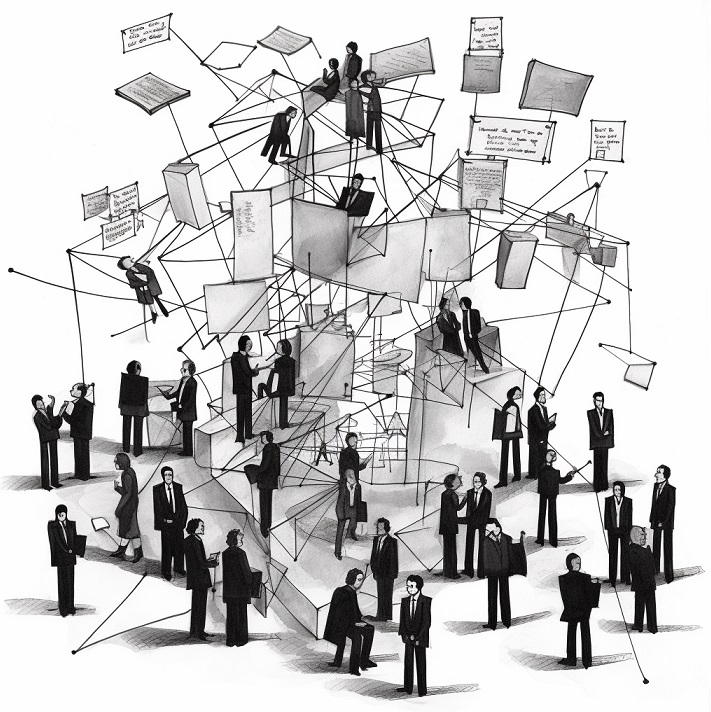
My first post of 2018 addresses an idea that’s just starting to gain traction – one you’ll hear a lot more about from me soon: Quality 4.0. It’s not a fad or trend, but a reminder that the business environment is changing, and that performance excellence in the future will depend on how well you adapt, change, and transform in response.
Although we started building community around this concept at the ASQ Quality 4.0 Summits on Disruption, Innovation, and Change in 2017 and 2018, the truly revolutionary work is yet to come.
What is Quality 4.0?
Quality 4.0 = Connectedness + Intelligence + Automation (C-I-A)
for Performance Innovation
The term “Quality 4.0” comes from “Industry 4.0” – the “fourth industrial revolution” originally addressed at the Hannover (Germany) Fair in 2011. That meeting emphasized the increasing intelligence and interconnectedness in “smart” manufacturing systems, and reflected on the newest technological innovations in historical context.
The Industrial Revolutions
- In the first industrial revolution (late 1700’s), steam and water power made it possible for production facilities to scale up and expanded the potential locations for production.
- By the late 1800’s, the discovery of electricity and development of associated infrastructure enabled the development of machines for mass production. In the US, the expansion of railways made it easier to obtain supplies and deliver finished goods. The availability of power also sparked a renaissance in computing, and digital computing emerged from its analog ancestor.
- The third industrial revolution came at the end of the 1960’s, with the invention of the Programmable Logic Controller (PLC). This made it possible to automate processes like filling and reloading tanks, turning engines on and off, and controlling sequences of events based on changing conditions.
The Fourth Industrial Revolution
Although the growth and expansion of the internet accelerated innovation in the late 1990’s and 2000’s, we are just now poised for another industrial revolution. What’s changing?
- Production & Availability of Information: More information is available because people and devices are producing it at greater rates than ever before. Falling costs of enabling technologies like sensors and actuators are catalyzing innovation in these areas.
- Connectivity: In many cases, and from many locations, that information is instantly accessible over the internet. Improved network infrastructure is expanding the extent of connectivity, making it more widely available and more robust. (And unlike the 80’s and 90’s, there are far fewer communications protocols that are commonly encountered so it’s a lot easier to get one device to talk to another device on your network.)
- Intelligent Processing: Affordable computing capabilities (and computing power!) are available to process that information so it can be incorporated into decision making. High-performance software libraries for advanced processing and visualization of data are easy to find, and easy to use. (In the past, we had to write our own… now we can use open-source solutions that are battle tested.
- New Modes of Interaction: The way in which we can acquire and interact with information are also changing, in particular through new interfaces like Augmented Reality (AR) and Virtual Reality (VR), which expand possibilities for training and navigating a hybrid physical-digital environment with greater ease.
- New Modes of Production: 3D printing, nanotechnology, and gene editing (CRISPR) are poised to change the nature and means of production in several industries. Technologies for enhancing human performance (e.g. exoskeletons, brain-computer interfaces, and even autonomous vehicles) will also open up new mechanisms for innovation in production. (Roco & Bainbridge (2002) describe many of these, and their prescience is remarkable.) New technologies like blockchain have the potential to change the nature of production as well, by challenging ingrained perceptions of trust, control, consensus, and value.
The fourth industrial revolution is one of intelligence: smart, hyperconnected cyber-physical systems that help humans and machines cooperate to achieved shared goals, and use data to generate value.
Enabling Technologies are Physical, Digital, and Biological
These enabling technologies include:
- Information (Generate & Share)
- Affordable Sensors and Actuators
- Big Data infrastructure (e.g. MapReduce, Hadoop, NoSQL databases)
- Connectivity
- 5G Networks
- IPv6 Addresses (which expand the number of devices that can be put online)
- Internet of Things (IoT)
- Cloud Computing
- Processing
- Predictive Analytics
- Artificial Intelligence
- Machine Learning (incl. Deep Learning)
- Data Science
- Interaction
- Augmented Reality (AR)
- Mixed Reality (MR)
- Virtual Reality (VR)
- Diminished Reality (DR)
- Construction
- 3D Printing
- Additive Manufacturing
- Smart Materials
- Nanotechnology
- Gene Editing
- Automated (Software) Code Generation
- Robotic Process Automation (RPA)
- Blockchain
Today’s quality profession was born during the middle of the second industrial revolution, when methods were needed to ensure that assembly lines ran smoothly – that they produced artifacts to specifications, that the workers knew how to engage in the process, and that costs were controlled. As industrial production matured, those methods grew to encompass the design of processes which were built to produce to specifications. In the 1980’s and 1990’s, organizations in the US started to recognize the importance of human capabilities and active engagement in quality as essential, and TQM, Lean, and Six Sigma gained in popularity.
How will these methods evolve in an adaptive, intelligent environment? The question is largely still open, and that’s the essence of Quality 4.0.
—
Roco, M. C., & Bainbridge, W. S. (2002). Converging technologies for improving human performance: Integrating from the nanoscale. Journal of nanoparticle research, 4(4), 281-295. (http://citeseerx.ist.psu.edu/viewdoc/download?doi=10.1.1.465.7221&rep=rep1&type=pdf)








Leave a Reply